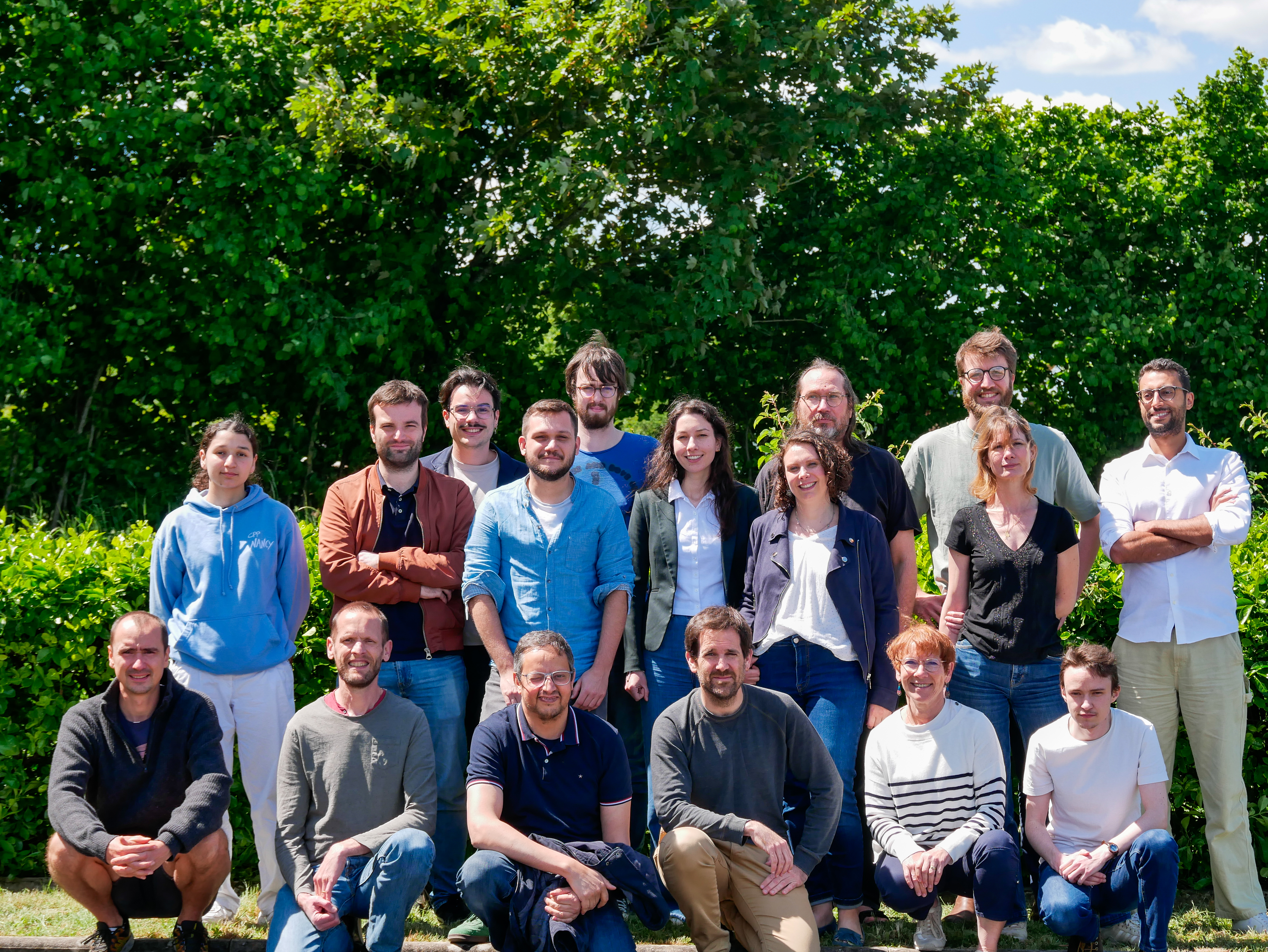About RING
Identity
RING (Research for Integrative Numerical Geology) is an academic research team of École Nationale Supérieure de Géologie de Nancy and GeoRessources, a research unit of the Université de Lorraine, and Centre National de la Recherche Scientifique.
Combining geosciences, applied mathematics, and computer programming, we do methodological research to describe the geometry and heterogeneities of the subsurface consistently with observations (big, sparse and wide data) and geological concepts.
This research is done in partnership with academia and industry in the frame of the RING Consortium, since 1989.

RING Team - May 2025
(Photo credits: RING)
Vision
21st century earth modeling is a tool to manage subsurface uncertainties, test geological scenarios, integrate across several physical simulators at the appropriate scale and finally support decisions.
Mission
RING develops game-changing subsurface modeling technology to support industry and academia in better understanding subsurface processes and addressing the challenges rained by the energy transition and natural hazards.
As an academic research group, RING also develops multidisciplinary skills in geoscience, software and engineering at the undergraduate and graduate levels to help students to understand, use, improve and test earth modeling software.
Values
The main values guiding us to fulfill our mission are:
- Community: We value community both in the research group and in the community formed by our academic and industrial partners to exchange and collaborate.
- Expertise: We aim at the best science and technology.
- Multidisciplinary: We are curious and firmly believe that the combination of knowledge from various areas creates value.
- Critical Thinking and Creativity: We like to identify gaps and build bridges with out-of-the-box thinking.
- Integrity: We admit that a solution is seldom perfect and explicitly state our working hypotheses.
One of the goal of our research group is to develop new software and technologies. Consortium sponsors can use and industrialize software, royalty-free. In addition to internal use of software by sponsors, several commercial software products or open-source projects have been based on RING technologies.
RING finds its origin in the long tradition of combined engineering and Geosciences of the Nancy School of Geology, which has considered computer programming as part of the modern geologist's toolbox since the time of punch cards. Following the development of several automatic contouring methods in the 70's and 80's (GEOL, Cartolab), the research group increased its international recognition since the gOcad project was initiated in 1989 by Prof. Jean-Laurent Mallet.

Subsurface models are essential to build knowledge and support decisions about natural resources, energy transition and hazard management, but they can be affected by large uncertainties due to the lack and incompleteness of subsurface data. We perform Research for Integrative Numerical Geology to better account for geological concepts in interpretation of geoscientific data and to sample and reduce the associated uncertainties. Our ultimate objective is to effectively describe geological objects with evolving and adaptative numerical models, integrating geometry and physics at various space and time scales, with real-time updates. This translates into theoretical work and novel technologies to efficiently represent, build, update and ask questions to deterministic and stochastic subsurface models.
Our research primarily focuses on the geometry, topology and properties of geological objects. It is declined into four main research areas:
